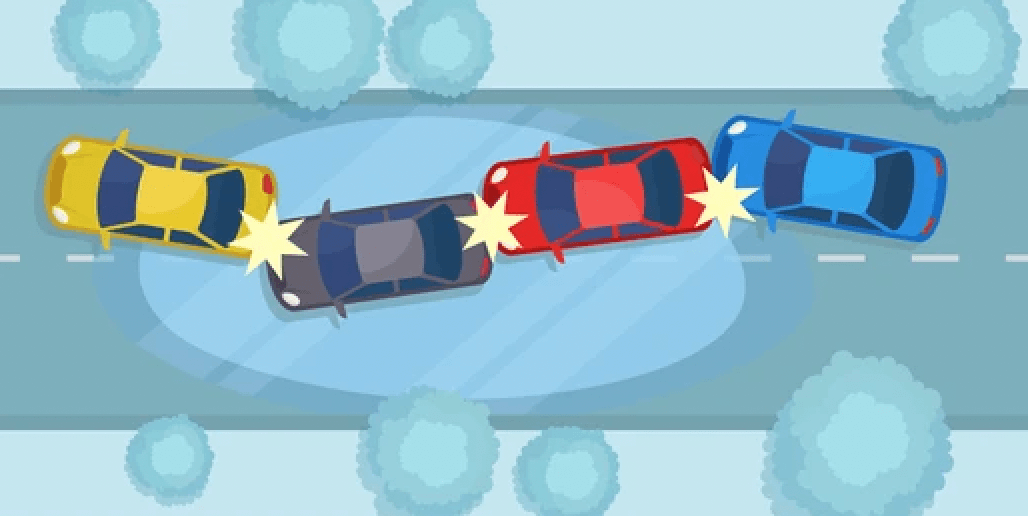Free Consultation

Chain-Reaction & Multi-Vehicle Crash
A multi-vehicle crash or a “chain-reaction” traffic accident occurs when three or more vehicles collide into one another in a series of rear-end crashes that are caused mainly from the force of the first collision.
As chain-reaction traffic crashes typically involve many drivers who were acting “carelessly” to a certain degree, filing for a car insurance claim or a personal injury lawsuit may be difficult during these kinds of accidents. These types of crashes can be difficult to determine who was entirely “at fault”.
If you do choose to file for an insurance claim or personal injury lawsuit against another driver during a multi-vehicle crash, you must prove liability under the legal theory labeled “negligence.” In other words, you must determine which driver’s carelessness led to the cause of the crash. In most multi-vehicle cases, the rule of thumb often points out the fact that all drivers must leave a safe following distance between their vehicle and the vehicle ahead of them. Now a common question typically arises; “What if my car was pushed into the vehicle in front of me because my car got hit from behind?”
Breaking It Down
It is important to understand who is responsible and at fault in these collisions. If there is a party that admits fault, the case is less difficult. However, if no one claims the blame, the lawyers and any expert witness will need to consider all factors and assess who could have started the initial chain reaction of collisions. If the first car was at fault because of distraction, this could remove fault with most of the other drivers. However, most of the drivers may have some responsibility in colliding when they were unable to brake soon enough.
While there are numerous factors that come in to play during multi-vehicle crash, there are some tips that can help you establish the order of impacts, aka who was careless during the accident;
- Eyewitnesses (those who were riding with you, passing-by drivers, the drivers behind the scene of the crash)
- Vehicle damage
- Evidence gathered at the scene (skid marks, vehicle debris)
- Police reports
Remember to gather as much information for your claim as possible. Whether the vehicle’s brake lights were burnt out, the driver was under the influence, whatever the case may be. Situations like this can be very overwhelming and confusing, but it is best to stay calm, gather evidence, and make the right call to an attorney.
Contact Us
If you’ve been involved in a car crash in Pennsylvania, whether in a chain-reaction crash or otherwise, due to another driver’s negligence, reach out to an experienced car crash attorney. For a free consultation with our team at Scartelli Olszewski, P.C., contact us today. You can reach us via phone at 570-346-2600.
Sources:
Rachel D. Olszewski, an attorney at Scartelli Olszewski, P.C., is a dedicated advocate for clients who have suffered unjust harm. Following the legacy of her esteemed family members, Rachel specializes in personal injury, medical malpractice, and criminal defense. She is actively involved in professional associations and serves on the board of the Luzerne County Bar Association Charitable Foundation. Rachel is admitted to practice in Pennsylvania state courts and the U.S. District Court for the Middle District of Pennsylvania.
Linked In - https://www.linkedin.com/in/olszewskirachel/

